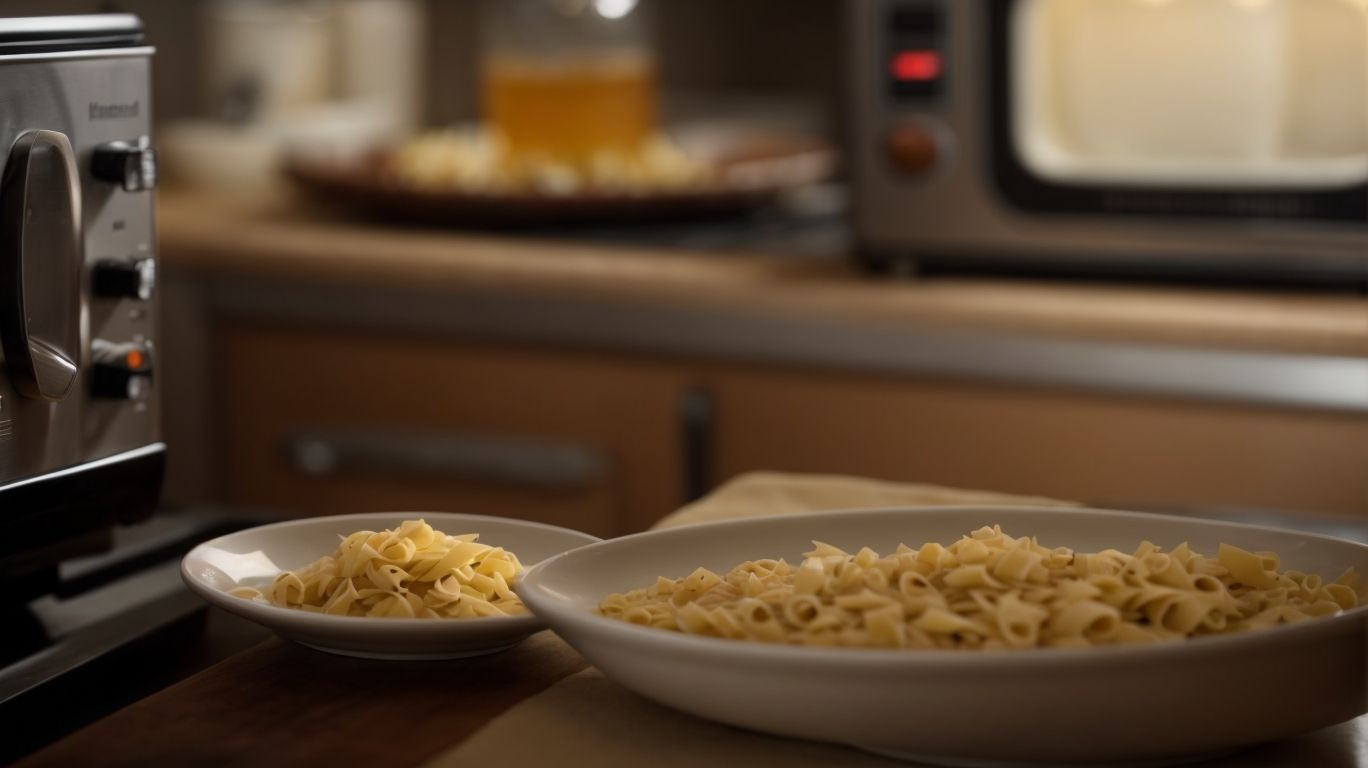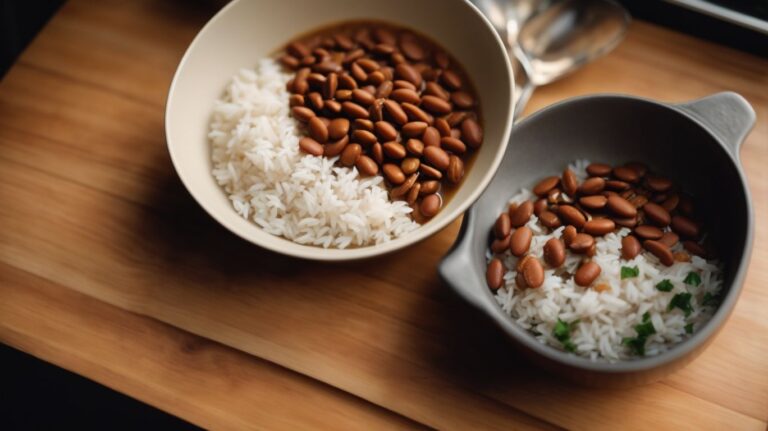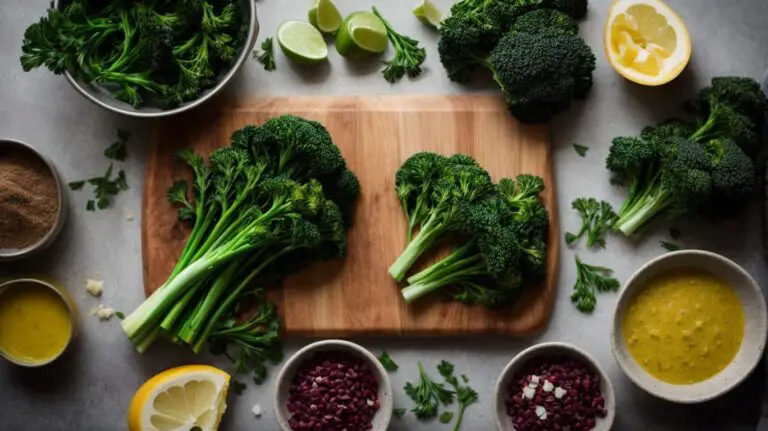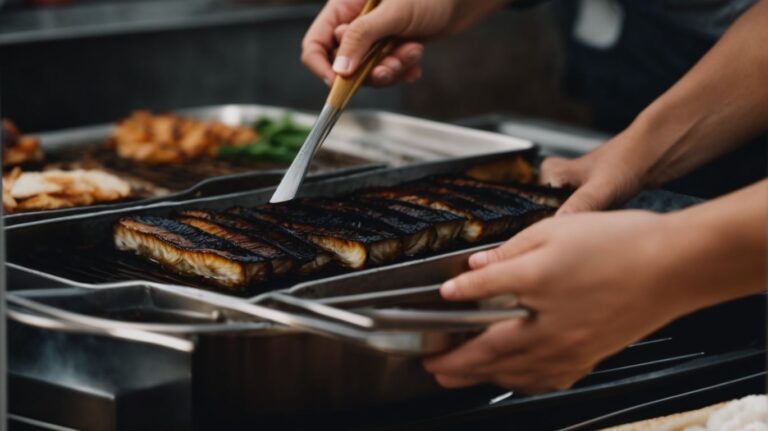How to Cook Pasta With Microwave?
Are you looking for a quick and easy way to cook pasta? Look no further than your microwave!
In this article, we will discuss the benefits of using a microwave for cooking, explore what types of foods can be cooked in a microwave, and most importantly, walk you through the steps of cooking pasta in the microwave.
From choosing the right type of pasta to adding delicious flavorings, we’ve got you covered. So, if you’re ready to enjoy a hassle-free pasta dish, keep reading for tips and tricks on mastering microwave pasta cooking.
Key Takeaways:
Why Use a Microwave for Cooking?
Using a microwave for cooking offers convenience and speed, making it an efficient method for preparing a variety of dishes, including pasta.
One of the key benefits of relying on a microwave for your culinary adventures is the incredible time-saving aspect it brings to the kitchen. Imagine throwing together a delicious pasta dish in mere minutes, thanks to the magic of microwave cooking. No more waiting for water to boil or standing over a hot stove stirring endlessly. With a microwave, you can simply pop your ingredients in a microwave-safe container, set the timer, and let the appliance work its wonders. This hands-free approach not only saves time but also allows you to focus on other tasks while your meal cooks effortlessly.
What Types of Foods Can Be Cooked in a Microwave?
A microwave can be used to cook a wide range of foods, from quick snacks like popcorn to complete meals such as pasta dishes.
One of the key advantages of using a microwave for cooking is its versatility in handling various ingredients and dishes. Whether you are looking to quickly whip up a snack or prepare a more elaborate meal, a microwave can efficiently cater to your needs. For snacks, you can easily make nachos, potato chips, or even crispy kale chips by simply seasoning and microwaving them. As for meals, options are endless – from steaming vegetables and cooking rice to preparing lasagna and risotto.
Its ability to cook different types of foods effectively makes a microwave an essential kitchen appliance for those looking for convenience and speed without compromising on taste. The controlled heating mechanism allows for precise cooking, ensuring that your dishes are cooked evenly. So next time you’re in a rush or simply craving a quick and delicious meal, consider utilizing your microwave to whip up a satisfying dish in no time.
How to Cook Pasta in the Microwave?
Cooking pasta in the microwave is a convenient and time-saving method that yields delicious results, perfect for satisfying pasta cravings in a pinch.
To start, ensure you have a microwave-safe container with enough water to fully submerge the pasta. Add a pinch of salt to enhance the pasta’s flavor while cooking. When selecting pasta, opt for varieties like spaghetti or penne that cook evenly in the microwave. Consider the cooking time specified on the packaging and adjust it according to your microwave’s wattage for optimal results. Once the pasta is cooked, drain it and mix in your favorite sauce for a quick and tasty meal.
Step 1: Choose the Right Type of Pasta
Selecting the appropriate type of pasta is crucial for achieving the desired texture and taste in your microwave dish, with options ranging from long spaghetti to small penne.
When selecting a pasta type for microwave cooking, consider that shapes like rotini or fusilli are perfect for holding chunky sauces, while smoother varieties like fettuccine or linguine pair well with cream-based sauces. Pasta shapes also influence cooking times, with small shapes requiring less time compared to larger ones. For a classic spaghetti aglio e olio, spaghetti is the ideal choice due to its long, thin shape that absorbs the garlic-infused olive oil beautifully.
Step 2: Measure the Pasta and Water
Accurately measuring the pasta and water ensures the proper ratio for cooking in the microwave, following recipe guidelines for optimal results.
In terms of creating a delicious pasta dish using the microwave, getting the measurements right is crucial. Not only does it impact the overall taste, but it also plays a significant role in the texture and consistency of the final product. The right amount of water ensures that the pasta cooks evenly and doesn’t end up too dry or soggy. Adjusting these measurements based on the type of pasta being used can make a substantial difference in the cooking process. Shorter cooking times may require less water, while longer cooking times might need a bit more.
Step 3: Place Pasta and Water in a Microwave-Safe Dish
Transfer the measured pasta and water into a microwave-safe dish to prepare for cooking, ensuring the container is suitable for the microwave’s cooking requirements.
Using the right dish for microwave cooking plays a crucial role in the preparation process. Microwave-safe containers are designed to withstand the heat and intensity of microwave cooking, preventing any damage or hazardous situations. It’s important to check the label on the dish to ensure it can be used safely in the microwave.
When transferring the pasta and water, make sure there is enough space in the dish to accommodate any expansion during cooking, preventing spillage. This careful attention to detail guarantees a successful and safe cooking experience.
Step 4: Add Flavorings and Seasonings
Enhance the taste of your microwave pasta dish by adding flavorful seasonings, herbs, and sauces that complement the pasta’s natural taste and texture.
In terms of selecting the perfect seasoning for your microwave pasta, consider the type of pasta you are using. For instance, a classic tomato-based sauce pairs wonderfully with spaghetti, while a creamy Alfredo sauce is a delightful match for fettuccine.
For a burst of freshness and flavor, experiment with chopped fresh herbs like basil, parsley, or oregano. These herbs not only enhance the aroma of the dish but also add a pop of color to your pasta.
To elevate the taste profile of your pasta, consider adding a sprinkle of parmesan cheese or a drizzle of extra virgin olive oil before serving. These simple additions can take your microwave pasta from ordinary to extraordinary.
Step 5: Microwave the Pasta
Place the prepared pasta dish in the microwave and cook it at specified intervals, adjusting the power settings as needed to ensure thorough and even cooking.
When cooking pasta in the microwave, it is crucial to choose the right power level to achieve the desired texture. Lower power settings may take longer to cook the pasta but can help prevent it from becoming too mushy. On the other hand, higher power levels will cook the pasta faster but might make it stick together. Experimenting with different power levels and cooking times can help you find the ideal balance between speed and quality. Watch the pasta as it cooks and stir it occasionally to promote even heating.
Step 6: Check the Pasta and Stir
Periodically check the pasta’s doneness during cooking intervals, stirring the dish to ensure even cooking and prevent sticking or clumping.
Checking and stirring the pasta while it cooks is a crucial step in achieving that perfect al dente texture. By stirring the pasta, you help distribute the heat evenly, making sure that no part is overcooked or undercooked. Stirring prevents the strands from sticking together, ensuring each piece cooks independently.
To assess readiness, taste a strand of pasta; it should be tender with a slight firmness at the center. Remember, pasta continues to cook briefly even after draining, so always slightly undercook to avoid mushy pasta.
Step 7: Continue Cooking and Checking Until Done
Continue cooking the pasta in the microwave and checking its progress until it reaches the desired doneness, ensuring proper drainage before serving the dish.
Once the pasta is cooked to perfection, carefully remove the bowl from the microwave using oven mitts to avoid burns. Remember, hot steam may still be present, so handle with caution.
Next, take a strainer or colander and carefully pour the cooked pasta into it to drain the excess water. Gently shake the strainer to rid the pasta of any remaining liquid. For best results, do not rinse the pasta as it retains the starch needed for sauces to cling better.
Now, your pasta is ready to be served with your favorite sauce or toppings for a delicious meal.
Tips and Tricks for Microwave Pasta Cooking
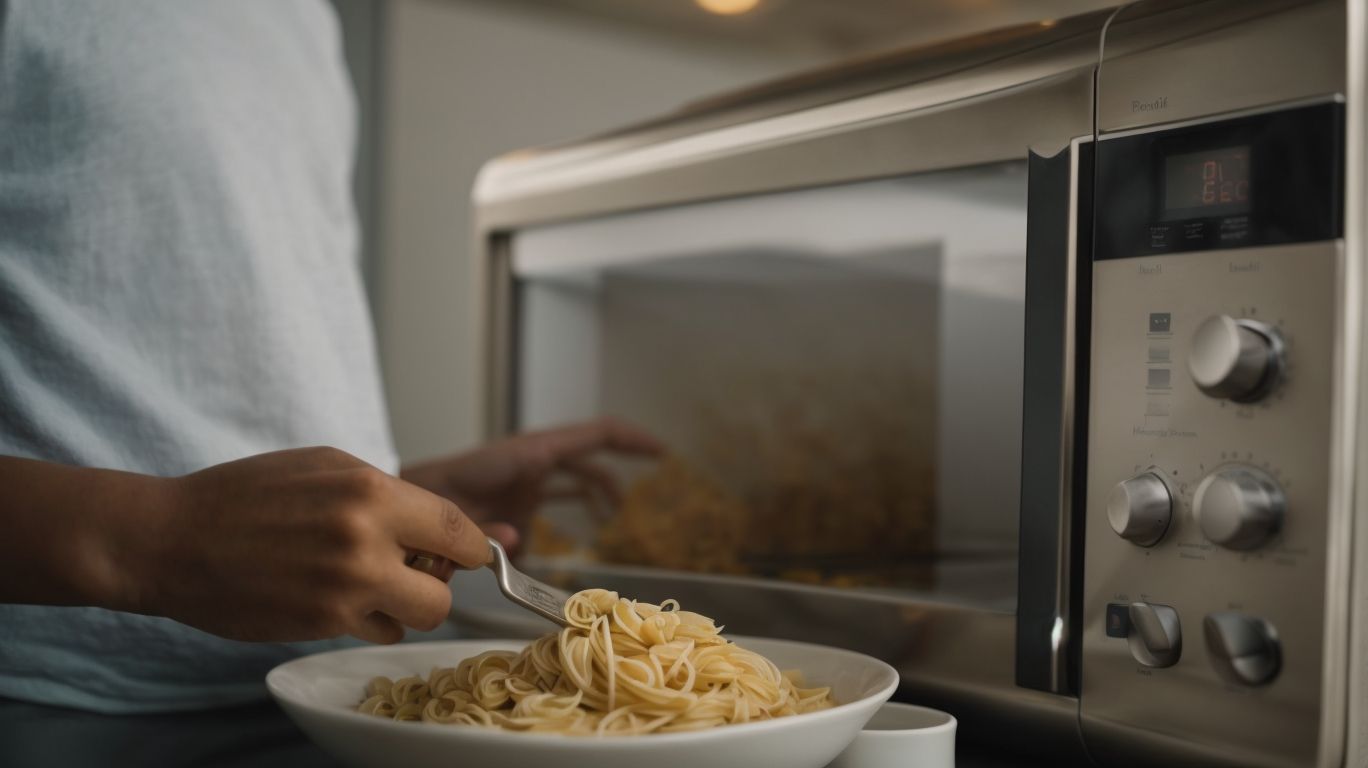
Credits: Poormet.Com – William Martinez
Master the art of microwave pasta cooking with these expert tips and tricks to prevent sticking, enhance flavor, and create creamy pasta dishes with ease.
One effective way to prevent pasta from sticking in the microwave is to add a few drops of olive oil to the cooking water, or stir the pasta occasionally during the cooking process.
To enhance the flavor profile of your microwave pasta dishes, consider adding crushed garlic, dried herbs, or a sprinkle of Parmesan cheese before cooking, ensuring the flavors are infused throughout the dish.
For a creamy texture in your pasta, try adding a splash of milk or cream during the cooking process, or stirring in a dollop of cream cheese or butter once the pasta is cooked to achieve a rich and luscious consistency.
How to Prevent Pasta from Sticking Together?
To prevent pasta from sticking together in the microwave, ensure you add enough water, stir the pasta during cooking, and avoid overcrowding the dish.
One crucial aspect of preventing pasta from sticking in the microwave is to make sure there’s ample water covering the pasta. Adding sufficient water creates steam, which helps cook the pasta evenly and prevents it from clumping together. Remember that pasta needs room to move around while cooking, so avoid overcrowding the dish.
- When cooking pasta in the microwave, it’s essential to stir it periodically. Stirring the pasta helps distribute the heat evenly and prevents any clumping or sticking. Stirring ensures that all parts of the pasta are cooked consistently, resulting in a perfectly cooked dish.
For ensuring ideal texture and quality of the pasta, you can add a splash of olive oil or a pinch of salt to the cooking water. This not only enhances the flavor but also helps in maintaining the pasta’s texture. After cooking, be cautious while draining the pasta to prevent it from over-drying; leaving a bit of cooking water can help retain moisture and prevent sticking. By following these simple tips, you can enjoy perfectly cooked microwave pasta every time!
How to Add Flavor to Microwave Pasta?
Infuse your microwave pasta with delicious flavors by incorporating a variety of sauces, seasonings, and herbs that complement the pasta’s taste profile and elevate the dish.
Experiment with bold flavors like sun-dried tomato pesto for a burst of tanginess or creamy Alfredo sauce for a rich and velvety texture that clings to the pasta strands.
Pair delicate angel hair pasta with a light lemon and garlic butter sauce to enhance its subtle taste, or opt for a robust marinara with chunky tomatoes mixed into al dente penne.”
How to Make Creamy Microwave Pasta?
Achieve creamy perfection in your microwave pasta by preparing rich cream sauces, incorporating cheese, and controlling cooking times to create luxurious and indulgent pasta dishes.
One key method in achieving a lusciously creamy pasta is to start by selecting the right type of cheese. Opt for aged cheeses like Parmesan or Pecorino Romano which add a depth of flavor and richness to your dish.
Another way to elevate the creaminess of your pasta is by incorporating heavy cream or milk into your sauce base. This helps to create a velvety smooth texture that coats each strand of pasta perfectly.
Experiment with different cooking techniques such as cooking the pasta in milk instead of water, or adding a dollop of creme fraiche or mascarpone cheese at the end of cooking for an extra creamy finish.
Conclusion: Quick and Easy Pasta in the Microwave
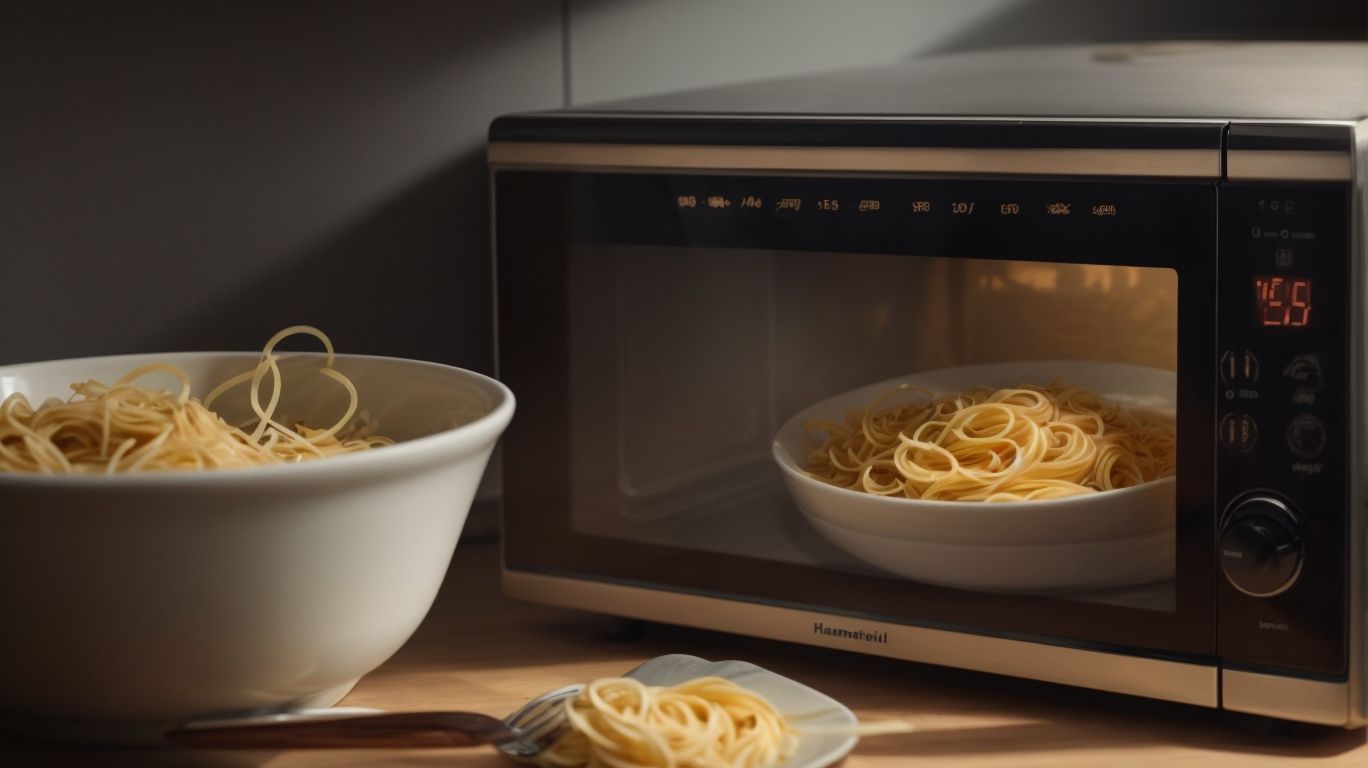
Credits: Poormet.Com – Aaron Davis
Utilizing the microwave to cook pasta offers a quick and easy solution for satisfying your cravings with minimal effort and maximum flavor.
Cooking pasta in the microwave is a game-changer for those pressed for time. Eliminating the need for large pots of boiling water and constant stirring, this method is not only convenient but also energy-efficient. The quick cooking time ensures that you can enjoy a delicious pasta dish in just a matter of minutes, perfect for hectic days when every minute counts.
Frequently Asked Questions
1. How to cook pasta with microwave in just a few minutes?
Ans: To cook pasta with microwave, start by placing the desired amount of pasta in a microwave-safe bowl. Add enough water to cover the pasta, and microwave on high for 3-4 minutes, stirring occasionally until the pasta is cooked to your preferred texture.
2. Can I cook different types of pasta in the microwave?
Ans: Yes, you can cook different types of pasta in the microwave, including spaghetti, penne, and macaroni. However, the cooking time may vary depending on the type and size of the pasta. It’s best to check the package instructions for specific cooking times.
3. Is it safe to cook pasta in the microwave?
Ans: Yes, cooking pasta in the microwave is safe as long as you follow the instructions and use a microwave-safe bowl. Make sure to stir the pasta occasionally while cooking to avoid any clumping and check for doneness before removing it from the microwave.
4. How much water should I use to cook pasta in the microwave?
Ans: The general rule of thumb for cooking pasta in the microwave is to use enough water to cover the pasta completely. For every 2 ounces of pasta, use 1 cup of water. However, you may need to adjust the amount of water depending on the type and size of the pasta.
5. Can I add sauce to my pasta before microwaving it?
Ans: No, it’s not recommended to add sauce to your pasta before microwaving it. The pasta needs to absorb the water and cook properly before adding any sauce. You can add sauce after the pasta is cooked and mixed with a little bit of water or oil to prevent it from sticking together.
6. How can I add more flavor to my microwaved pasta?
Ans: You can add more flavor to your microwaved pasta by using broth instead of water, adding herbs and spices, or using a flavored oil. You can also cook the pasta with some garlic, onion, or other aromatics to infuse more flavor into it. Experiment with different ingredients to find your favorite combination.

